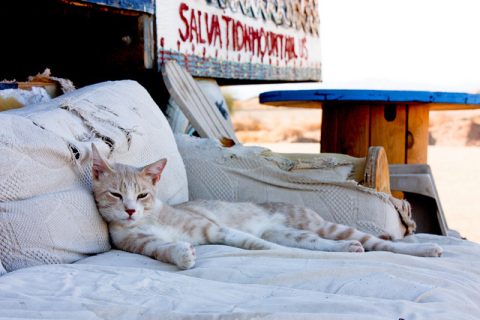This story uses a lot of sound images. Do you think sound is an underserved sense in stories? What are some of your favorite stories that feature prominent sound descriptions?
Sound is tough to do well. It seems, somehow, that making these letters create sound is a further stretch than visual imagery. Perhaps sound being underserved has to do with it being more of a latent sense. I feel like I often have to really hunt it down, while the visuals of a story come more viscerally. One of my early writing mentors gave one of my workshop stories hell for sounding more like a clever music review rather than actually capturing music in language. She was right. I wanted to write “Sonny’s Blues,” to tap that human experience of music that Baldwin does perfectly, and instead I was writing about music in a junky, expository style.
For stories that nail sound, Stuart Dybek’s stories in I Sailed with Magellan especially pulse with sound. Ralph Ellison was a master of sound. Phil Klay’s “OIF” is one of the most rhythmically impressive pieces I’ve ever read, though it’s a very different approach to sound.
Sound interacts with space in an interesting way in this story. The deaf girl’s apartment is filled with sounds she can’t hear, but the story ends with sounds the maintenance man assumes she feels internally. And while all this is going on, the maintenance man’s obsession with the deaf girl moves from a physical obsession to an obsession with how she experiences life in the apartment. This pairing suggests that there is a connection between a character’s interiority, physical existence, and the space they occupy. Could you talk about that relationship and the challenges of exploring it through sound?
Thanks for this sharp reading. Yes, that’s an essential relationship between interiority and physical world. My favorite writers tunnel interiority by starting with concrete setting. The storyteller must make us believe in a tangible world in order to show us how a character perceives that world and then how they perceive themselves. Virginia Woolf always rocks this. Those first few dozen pages of Dalloway slay me. Saunders’ opening of “Victory Lap,” too. Concrete settings breaching the subconscious. Maybe the most direct bridge between the physical and the interior are our homes. They become like little boxes of our deepest selves stowed into closets and crammed onto shelves and sometimes strewn across the floor. Apartments are like Joseph Cornell boxes.
It was indeed a challenge to get to the interior primarily through sound. I tried to strip my character’s senses in this story, tried to give him sightless tunnel vision. I suppose I could have focused on touch or smell or had him lick everything, but the negative of sound quickly asserted itself as I drafted. In revision, sound possessed everything. It was tricky not to fall back on visuals. I had to keep kicking myself, kicking the story, until it heard too much. That was the moment of connection for me, when the maintenance guy gets overwhelmed by all he hears. It’s like being at a punk rock concert, standing so close to the monitors that you feel the bass in your chest, and then it’s just a wall of indiscriminate sound. You’re hearing nothing but excess, blaring, and it becomes a roundabout way to realize what nothing might sound like.
Your maintenance man experiences a sort of voyeuristic joy while inside deaf girl’s apartment. He hears what she can’t and therefore doesn’t experience the space in the same way. It makes me wonder what inspired the situation in this story. Have you ever spent time in someone else’s apartment/house/room like that, and what did you learn about that person that you didn’t already know?
I’ve crept around thousands of homes. I was a house painter for ten years. Two of those years were spent painting apartments. I’ve seen so many lives splayed out before me, which is pure gold for a writer. I’m grateful for that experience. I’ve learned to know folks through their possessions and what they leave behind and what they hide in that closet that I have to paint and must empty into the open for all to see. Many of these experiences have wormed their way into my stories over the years. We painters, tradesmen entering your home, we have to be discreet and respectful. Still, I could never completely block out the lives I was trying not to see. So always be kind to these folks who come to know you in a more intimate way than your doctors or best friends.
List five ambient sounds you hear currently and use them in metaphors to describe your five favorite foods.
What an interesting exercise. I only have three. I try to keep my writing space dead silent as I’m so easily distracted and obsessed with sound. Here goes: The rainbow sprinkles in my frozen yogurt surfaced like my two-year-old’s chattering through the sheetrock. My scalding coffee tears over my tongue like a groaning pickup zipping by. Cotton candy’s fluffed nothing like a whirring fan. Ugh, this is why I don’t write about food often ….
Any recent news you want to share the readers? New projects?
I have stories in the new issues of Juked, Bat City Review, Cimarron Review, Sundog Lit, as well as a new flash piece online at Catch & Release.
I’m really thrilled about some forthcoming stuff in Pleiades, New Madrid, Barely South, and Parcel. As far as current projects, for the last three years I’ve been stabbing at a novel set in my hometown of Alma, Michigan. I’m planning to have a completed draft polished by the end of the summer. If I say it here, it’ll have to be true.



